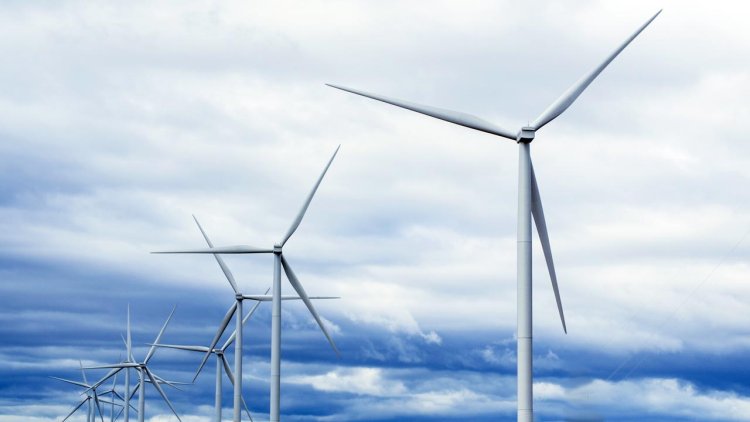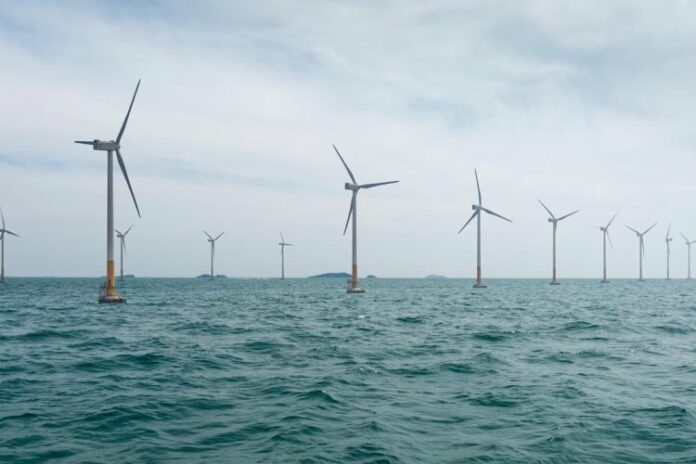The transmission system operator TenneT transmitted around 19.24 terawatt hours (TWh) of wind energy from the German North Sea to land in 2023. In the Netherlands, the figure was 4.17 TWh. In purely mathematical terms, this means that the annual requirements of more than nine million households can be covered by renewable energy (at 3,250 kWh annual consumption per household).
In the Netherlands, 11.54 TWh of wind energy was transferred from sea to land in 2023 (previous year: 7.91 TWh). The increase compared to the previous year is primarily due to the commissioning of the new Hollandse Kust (noord) offshore grid connection system by TenneT and the corresponding expansion of offshore wind farms in 2023. TenneT’s transmission capacity in the Dutch North Sea increases to 4,666 megawatts (MW). Onshore wind energy capacity in the Netherlands in 2023 was 6,854 MW, which generated 7.96 TWh of wind energy (previous year: 5.14 TWh).
In Germany, the annual result for 2023 was around nine per cent below the previous year’s figure: 21.13 TWh in 2022. Due to the simultaneous strong increase in onshore wind power generation, the total result in Germany in 2023 was 148.97 TWh (previous year 122.79 TWh). At around 13 per cent, the share of North Sea electricity in 2023 was around four percentage points lower than in the previous year (17.2 per cent). Since the completion of the 13th offshore grid connection (DolWin6) in September 2023, TenneT’s offshore transmission capacity in the German North Sea has increased to 8,032 MW (previous year: 7,132 MW).
TenneT COO Tim Meyerjürgens said:
“We can see that the expansion of our offshore grid connection systems in the Netherlands and Germany is progressing well. And onshore grid expansion in Germany is also finally making progress thanks to numerous acceleration measures over the past two years. Nevertheless, the many lost years are now having an increasing impact on the ‘wind yield’ in the German North Sea. Due to the still numerous congestions in the onshore electricity grid, the large wind farms in the North Sea have to be shut down more and more frequently because there are hardly any large conventional power plants in the north that could be throttled instead. As a result, the associated redispatch slows down the generation of offshore wind power.
This not only affects the amount of electricity fed into the grid, but also impacts its price development. This shows that Germany must continue to accelerate the expansion of the grid and the major electricity highways so that the potential of the North Sea as a wind power plant for Germany and Europe can be utilised efficiently as soon as possible.”

In the German North Sea, the maximum feed-in capacity of offshore wind farms in 2023 was measured at 6,491 megawatts (MW) on 1 April. In the Dutch North Sea, the maximum value was 3,356 MW on 28 November 2023.
The installed capacity of offshore wind farms in the German North Sea was 7,106 MW as at 31 December 2023 (previous year: 7,036 MW). In the Dutch North Sea, the figure as at 31 December 2023 was 5,622 MW (previous year: 3,220 MW).
The installed capacity of wind turbines in the German Baltic Sea totalled 1,352 MW (50Hertz grid area). They generated 4.17 terawatt hours in 2023 (previous year 3.62 TWh), meaning that Germany’s total offshore yield in 2023 was 23.41 terawatt hours (including 19.24 TWh in the North Sea). In addition to 125.56 terawatt hours of onshore wind energy generated, the total yield in Germany was 148.97 terawatt hours (previous year 122.79 TWh).



